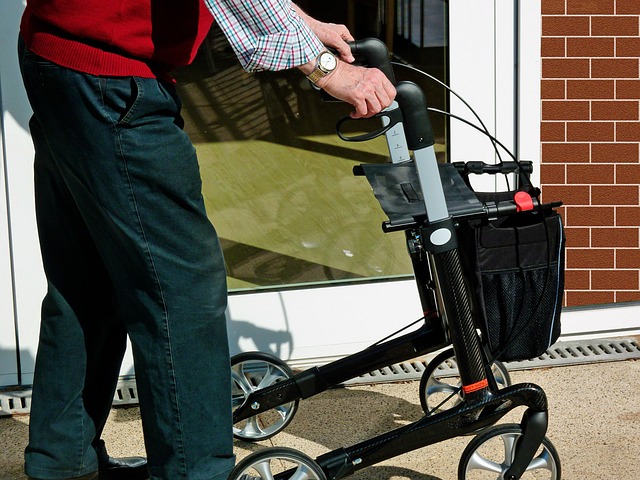Finding the Perfect 1 Bedroom Senior Apartment for You
Finding the ideal one-bedroom senior apartment can feel overwhelming, but with the right approach, it can be a seamless process. Taking the time to understand your needs, preferences, and budget is crucial in making an informed choice. Consider what features and amenities are most important to you and how the location will impact your lifestyle. Whether you desire proximity to family, medical facilities, or entertainment, each factor plays a significant role in your decision.

Choosing a one-bedroom apartment as a senior involves unique considerations that differ from typical apartment hunting. Your priorities may have shifted to focus on accessibility, safety, proximity to medical facilities, and community connections. The right apartment can enhance your independence while providing the support and amenities that contribute to a fulfilling lifestyle.
What to Look for in a 1-Bedroom Apartment
When evaluating potential apartments, prioritize accessibility features such as grab bars in bathrooms, step-in showers, wide doorways for mobility aids, and accessible parking spaces. Consider the apartment’s location within the building - ground floor units eliminate stair climbing, while upper floors may offer better views and security. Kitchen accessibility matters significantly, so look for apartments with lower countertops, easy-to-reach cabinets, and adequate lighting. Storage space becomes crucial for medical equipment, seasonal items, and personal belongings.
Online Resources for Apartment Searches
Several specialized websites cater specifically to senior housing needs. Apartments.com offers filters for senior-friendly features and age-restricted communities. SeniorLiving.org provides comprehensive listings with detailed amenities information. HUD.gov maintains databases of subsidized housing options for qualifying seniors. Zillow and Rent.com include senior-specific search filters, while local housing authority websites often list available units in your specific area. Many property management companies also maintain their own websites with virtual tours and application processes.
Location-Based Housing Options
Affordable housing availability varies significantly by geographic location. Urban areas typically offer more subsidized housing options but higher overall costs. Suburban communities may provide better value for independent living with access to shopping and medical facilities. Rural areas often have lower housing costs but may lack public transportation and specialized services. Research state-specific programs, as some states offer additional senior housing assistance beyond federal programs. Consider proximity to family members, healthcare providers, grocery stores, and public transportation when evaluating different locations.
Selecting the Right Community Environment
The community atmosphere significantly impacts your daily experience. Visit potential apartments at different times to observe activity levels and resident interactions. Age-restricted communities (55+) often provide more peer connections and age-appropriate activities. Mixed-age communities may offer more diversity but fewer senior-specific amenities. Evaluate community spaces like libraries, fitness centers, social rooms, and outdoor areas. Consider the management company’s reputation, maintenance responsiveness, and resident services. Some communities offer additional services like housekeeping, meal programs, or transportation assistance.
Qualifying for Income-Based Housing
Low-income senior apartments typically require income verification and may have waiting lists. HUD Section 202 housing serves seniors with very low incomes, while Section 8 vouchers can be used in qualifying private apartments. Income limits vary by area but generally require earnings below 50-80% of the area median income. Required documentation includes Social Security statements, pension information, bank statements, and medical expense records. Some programs consider assets in addition to income, while others focus solely on monthly earnings. Application processes can take several months, so apply early and to multiple programs.
| Housing Type | Average Monthly Cost | Income Requirements | Key Features |
|---|---|---|---|
| HUD Section 202 | $300-800 | Very low income (30% AMI) | Subsidized rent, support services |
| Section 8 Voucher | $400-1200 | Low income (50% AMI) | Choice of apartments, portable |
| Low-Income Tax Credit | $500-1000 | Moderate income (60% AMI) | Newer construction, amenities |
| Market Rate Senior | $800-2000 | No restrictions | Full amenities, immediate availability |
| Senior Co-op | $400-1200 | Varies by location | Ownership benefits, community involvement |
Prices, rates, or cost estimates mentioned in this article are based on the latest available information but may change over time. Independent research is advised before making financial decisions.
Making Your Final Decision
Once you’ve identified potential apartments, create a comparison chart including monthly costs, included utilities, pet policies, lease terms, and available amenities. Schedule visits to your top choices and bring a trusted friend or family member for additional perspective. Ask about move-in costs, security deposits, and any age-related discounts. Verify that the apartment meets your current needs while considering how your requirements might change over time. Review lease agreements carefully, particularly clauses regarding rent increases, maintenance responsibilities, and community rules.
Finding the right one-bedroom apartment requires patience and thorough research, but the effort invested in making an informed choice will contribute to years of comfortable and independent living. Take time to explore all available options and don’t hesitate to ask questions about anything that concerns you during the selection process.




